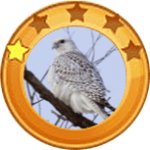- Home
- Shop
- Forest Series
- Grassland Series
- Desert Series
- Contact
- Home
- Shop
- Forest Series
- Grassland Series
- Desert Series
- Contact

Falcon Series





REMOTE PARENTAL MODE
A remote controller is equipped to allow parents to take over the control if the baby is too young to drive this aeroplane alone. Moreover, the airfoils with button lock hinges could be folded to saving storing space while the screw propeller will rotate powered by wind. The battery indication reminds you of when to recharge.
SAFE & COMFORTABLE
The 3-point adjustable safety belt perfectly fixes your baby firmly on the seat. The driving wheels are made of foam rubber, soft and highly-resilient to effectively absorb the shock and ensure an excellent grip on flat or rugged roads. Both wings are configured with an auxiliary trolley wheel which offers a significant support against excessive tipping at turning.
DISTINCTIVE GIFT FOR KID
Specially scaled down in accordance to American aircraft in Battle of Midway, this children’s electric toy car could ‘flying’ at full directions. Operated with 2 aviation control levers in the cockpit, it simulates realistic aircraft-driving. With large capacity batteries, long-time playing is assured, perfectly regarded as a present for your grandson/granddaughter on Festivals like Christmas and Children’s Day.
RICH SOUND EFFECTS
A volume-adjustable audio system adds engine sound and music to this unique baby carriage, containing functions of MP3 (with USB interface) and an FM radio that will search for valid frequency automatically. The button on the left control lever is for machine gun, and the right one aerial bomb.


CHARACTERISTICS
The Chipmunk is a member of the family Mammalia, Rodentia and Sciuridae. It is also known as the Striped Squirrel, the Timber Tiger and the Mini-bear. The body length among most Chipmunks ranges from 5.5 to 6.3 inches and the tail length is 5 Inches. Chipmunks typically weigh about 0.02 pounds and live about 5 to 10 years. They have small but prominent ears which face forwards, and small eyes on the sides of their heads. Most wild Chipmunks are lively.


Lorem ipsum dolor sit amet, consectetur adipiscing elit. Ut elit tellus, luctus nec ullamcorper mattis, pulvinar dapibus leo.


CHARACTERISTICS
The gyrfalcon is a bird of prey, the largest falcon in the world. Its plumage varies with location, with birds being colored from all-white to dark brown. These color variations are called morphs and can be “white”, “silver”, “brown”, and “black”. The brown form of the gyrfalcon is distinguished from the peregrine by the cream streaking on the nape and crown and by the absence of a well-defined malar stripe and cap. The black morph has a strongly black-spotted underside, rather than finely barred as in the peregrine. White form gyrfalcons are the only predominantly white falcons. Silver gyrfalcons resemble a light grey lanner falcon of larger size. Juveniles are darker and browner than adults. Like in other falcons, the female is much larger than the male.

RANGE AND HABITAT
Gyrfalcons occur on the Arctic coasts, and the islands of northern North America, Europe, and Asia. They are mainly resident there also, but some gyrfalcons disperse more widely after the breeding season, or in winter. These birds inhabit tundra, taiga, and mountains with rocky outcrops and cliffs. They are also known to spend considerable periods during the winter on sea ice far from land.

DIET
Gyrfalcons are generally solitary birds and interact with their mates only during the breeding season. They are diurnal and hunt by fast flight low over the ground. They usually hunt in a horizontal pursuit, rather than with the peregrine’s speedy stoop from a height. Most prey is killed on the ground, whether they are captured there, or if the victim is a flying bird, forced to the ground. Gyrfalcons are generally silent birds but near the nest, they produce loud “kiak kiak kiak” and “gik-gik”; when excited, they will make a “giiiii” call.

BEHAVIOR
Habits and Lifestyle
Gyrfalcons are strictly carnivores. Typical prey includes the ptarmigan and waterfowl, which they may take in flight; they also take fish and mammals. Avian prey can include gulls, corvids, smaller passerines, waders, and other raptors. Mammalian prey often includes lemmings, voles, ground squirrels, hares and rarely also bats.
Mating Habits
Gyrfalcons are monogamous and pairs mate for life. During the breeding season, pairs perform several courtship displays including aerial display and displays at nest-site. Gyrfalcons nest mainly on cliff faces. Breeding pairs do not build their own nests, and often use a bare cliff ledge or the abandoned nest of other birds, such as golden eagles and common ravens. The clutch can range from 1 to 5 eggs but is usually 2 to 4. The incubation period averages 35 days, with the chicks hatching at a weight of around 52 g (1.8 oz). The nestlings are brooded usually for 10 to 15 days and leave the nest at 7 to 8 weeks. At 3 to 4 months of age, the immature gyrfalcons become independent of their parents, though they may associate with their siblings through the following winter. They become reproductively mature and are ready to breed at 2-3 years of age.

The Chipmunk is a member of the family Mammalia, Rodentia and Sciuridae. It is also known as the Striped Squirrel, the Timber Tiger and the Mini-bear. The body length among most Chipmunks ranges from 5.5 to 6.3 inches and the tail length is 5 inches. Chipmunks typically weigh about 0.02 pounds and live about 5 to 10 years. They have small but prominent ears which face forwards, small eyes on the sides of their heads. Most wild Chipmunks are lively.
The Red Squirrel, a member of the Sciuridae, is an arboreal, omnivorous rodent often referred to as a Forest Seeder and folklore as the Devil King Squirrel.
The Arizona Gray Squirrel, also known as the American Gray Squirrel, is a member of the family Rodentia and Sciuridae. It is small in size, with gray fur and a belly between white and cream. It has long ears, no tufts of fur and a fluffy tail edged in white. The body is about 16-20 inches long and weighs up to 1.4 pounds.
The Rock Squirrel, also known as Sao Maozi or Stone Mouse, belongs to the rodent and is a species in the family Sciuridae. The most common natural predators of the Rock Squirrel include bobcats, owls, eagles and snakes. Though the Rock Squirrel is cute, alert, and courageous, it is still considered a pest due to its habit of destroying crops.
The Abert’s Squirrel is a member of the genus Sciurus with a body length of 18-22.8 inches, a tail length of 7.5-9.8 inches and a weight of 2.2 pounds, and can live up to 10 years in the wild. Its most distinctive feature is tassels of fur about 0.8-1.2 inches long at the tip of its ears, which looks very interesting. In addition, it is alert and agile.

Gyrfalcons Are a Kingly Sight
Gyrfalcons are casual winter visitors, with a small outpost in South Dakota.
It’s the year 1200. You’re invited to a birthday party for a Scandinavian king.
Two things to consider. First, what are you going to wear? Second, what do you give a guy who has everything?
A white gyrfalcon.
He’ll love it. It’s written that such a bird was worth its weight in gold.
Medieval royalty was big on falcons. The birds were used for hunting, as they are today. Falconry has been a sport for thousands of years. Falcons as gifts for royalty date to 2200 B.C. in China.
The kind of falcon you were allowed to own in England in medieval times depended on social position. Gyrfalcons were reserved for kings.
Earls could fly peregrine falcons, a yeoman (landowner) could have a goshawk. Our sharp-shinned species, called sparrowhawk in England, was reserved for priests. Servants could have kestrels.
Theft of a trained raptor was at times a capital crime in England.
White gyrs most often came from Iceland. They were captured as trade goods.
Gyrs, largest of the falcon family, are found in all Arctic regions, worldwide. Iceland was convenient for Europeans.
In North America the birds breed in the high Arctic, ranging in winter as far south as Montana, the Dakotas and here.
In Minnesota they are classified as “casual,” sporadic and irregular. They are most often seen in the Arrowhead region. Most sightings are from Duluth-Superior (where you also find most of the birders).
My first gyr was perched atop a grain elevator near the Duluth harbor. It was a brownish bird, most likely a juvenile, a yearling. Adults are gray, black or white.
My second gyr was gray, near Nome, Alaska, beside its nest on a cliff along a road leading out of that outpost.
I say nest because I faintly recall sticks, but the excitement of the sighting might have blurred my memory.
If the gyr had a nest it was built by another raptor, confiscated by the falcon. Gyrs would be content with scraping the cliff surface smooth, then laying eggs. They don’t build nests. (Would a king build his own castle?)
My third gyr is the one I remember best. It was in South Dakota, on the grasslands east of Pierre. The sighting was unusual because I actually was there to look for that species, long as the odds were.
In the National Geographic book “Complete Birds of North America,” the map showing gyrfalcons’ winter range is colored light blue for much of western and central Canada. There is that shallow dip into the U.S. And then, there’s a drop of blue in the middle of South Dakota — the Fort Pierre grasslands.
The grassland has a gentle roll to unbroken horizon. It is cut with infrequent gravel roads. I drove up a small hill to find my gyr perched on a fence pole, a majestic bird, fit for a king.
I wanted my trophy, a photo. I watched until nerves got the better of me, then snapped six quick frames from the van window just before the bird flew, low and away on strong wingbeats.
It was there to hunt pheasants and prairie grouse, menu substitutes for the rock and willow ptarmigan it eats at home.
I also saw golden and bald eagles on that trip, and prairie falcons, rough-legged, red-tailed, and ferruginous hawks. They were — are — also there for the pheasants and prairie grouse.
South Dakota’s e-mail bird alert, similar to ours, notes gyrs, three so far this winter. One of them was white. A gyr was mentioned on the Dakota list as recently as Jan. 4.
That grassland is my favorite birding destination. It’s easy to call it empty. But it’s filled with surprise.



Follow Us: